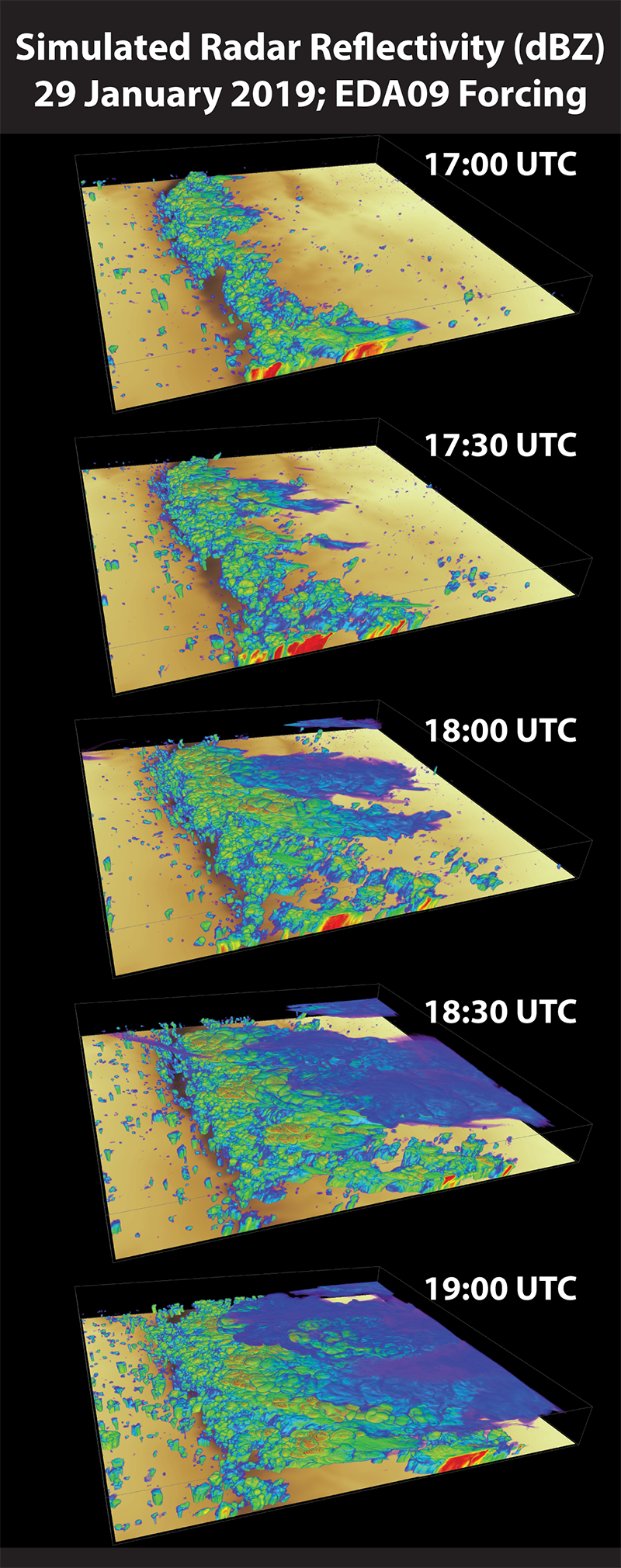LASSO-CACTI Development Continues; Many Runs Available Today
Published: 22 March 2023
Editor’s note: William Gustafson leads the Large-Eddy Simulation (LES) ARM Symbiotic Simulation and Observation (LASSO) activity. The latest LASSO scenario focuses on the Cloud, Aerosol, and Complex Terrain Interactions (CACTI) field campaign. Gustafson sent in the following update on the LASSO-CACTI scenario.

Convection is a complicated thing, and so is producing 2 petabytes of LES data on convection!
The new LASSO-CACTI scenario uses LES modeling of the deep convective initiation and growth during CACTI to help researchers better use and understand the suite of observations from the campaign, which occurred in 2018 and 2019 in Argentina.
Development of the new LASSO-CACTI product continues with additional simulations being run to fine-tune results on some days. Presently, we have 699 mesoscale simulations spread over 20 case dates and 33 LES simulations spread over nine case dates. This trove of simulations is an amazing resource for atmospheric researchers to use for understanding convective cloud dynamics, mesoscale organization, the boundary layer, orographic flow, aerosol transport, sensitivity to background forcings, and many related processes.
The LASSO-CACTI beta release has been available since May 2022, and researchers have begun using the simulations. This product consists of the raw simulations, subsets of related variables on both the raw vertical grid and interpolated to pressure and height surfaces, and the information needed to rerun all or part of each simulation. The domain grid spacings are 7.5 kilometers, 2.5 kilometers, 500 meters, and 100 meters, which span from mesoscale to LES scales. The production release will also include comparisons with sounding, satellite, radar, and precipitation observations.
The skill score comparisons are not currently available online to users outside of the U.S. Department of Energy laboratory complex, but the LASSO team can provide this information to users upon request, and we are working on a longer-term solution.
Get Started With LASSO-CACTI
Are you interested in using LASSO-CACTI? If so, you can access the data on ARM’s Cumulus high-performance computing cluster.
The cluster is holding the data temporarily to provide access while the LASSO team and ARM Data Center do the heavy lifting of preparing the full data set and making it available via ARM’s ordering system. The sheer size of this data set makes optimizing one’s workflow and analysis approach important. So, ARM provides users resources and access to the data directly on Cumulus to simplify the process.
All users need to do is request access to ARM’s high-performance computing resources and contact LASSO Principal Investigator William Gustafson for more information on the currently available data. You can also ask questions and participate in conversations about LASSO on the ARM discussion forum. Eventually, users will be able to access LASSO-CACTI data through ARM’s Data Discovery and the LASSO Bundle Browser.
Share Your Thoughts on LASSO’s Next Scenario for Maritime Clouds
While we get all the LASSO-CACTI data transferred to the ARM Data Center, we have already begun test simulations for the next LASSO scenario, which will focus on maritime clouds at ARM’s Eastern North Atlantic (ENA) atmospheric observatory, primarily during the Aerosol and Cloud Experiments in the Eastern North Atlantic (ACE-ENA) field campaign.
We would love to hear your thoughts on what you would like to see from an ENA-focused scenario. What science questions would you investigate using LASSO data? What style model configuration would best suit your needs? Engage with the LASSO developers on the ARM discussion forum or at lasso@arm.gov.
Keep up with the Atmospheric Observer
Updates on ARM news, events, and opportunities delivered to your inbox
ARM User Profile
ARM welcomes users from all institutions and nations. A free ARM user account is needed to access ARM data.


















